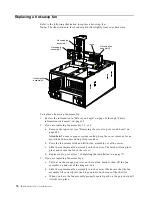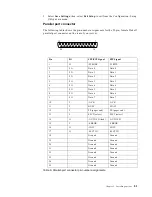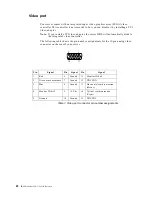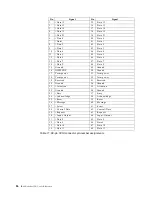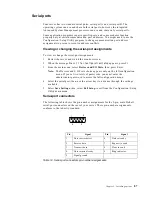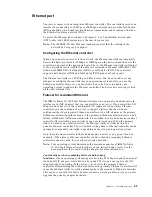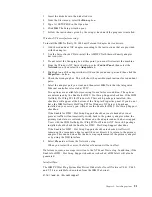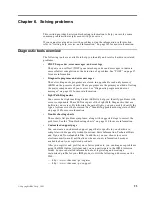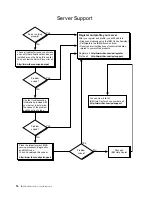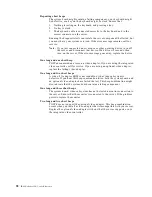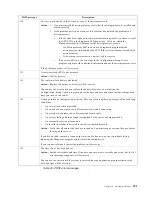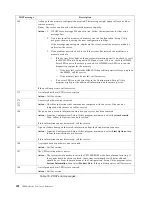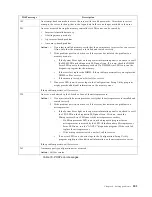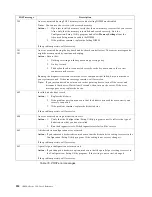
Chapter 5. Installing options
89
Ethernet port
Your server comes with an integrated Ethernet controller. This controller provides an
interface for connecting to 10-Mbps or 100-Mbps networks and provides full-duplex
(FDX) capability, which enables simultaneous transmission and reception of data on
the Ethernet local area network (LAN).
To access the Ethernet port, connect a Category 3, 4 or 5 unshielded twisted-pair
(UTP) cable to the RJ-45 connector on the rear of your server.
Note:
The 100BASE-TX Fast Ethernet standard requires that the cabling in the
network be Category 5 or higher.
Configuring the Ethernet controller
When you connect your server to the network, the Ethernet controller automatically
detects the data-transfer rate (10Mbps or 100Mbps) on the network and then sets the
controller to operate at the appropriate rate. That is, the Ethernet controller will adjust
to the network data rate, whether the data rate is standard Ethernet (10BASE-T), Fast
Ethernet (100BASE-TX), half duplex (HDX), or full duplex (FDX). The controller
supports half-duplex (HDX) and full-duplex (FDX) modes at both speeds.
The Ethernet controller is a PCI Plug and Play device. You do not need to set any
jumpers or configure the controller for your operating system before you use the
Ethernet controller. However, you must install a device driver to enable your
operating system to address the Ethernet controller. The device drivers are provided
on the ServerGuide CDs.
Failover for redundant Ethernet
The IBM Netfinity 10/100 Fault Tolerant Adapter is an optional redundant network
interface card (NIC adapter) that you can install in your server. If you install this NIC
adapter and connect it to the same logical LAN segment as the primary Ethernet
controller, you can configure the server to support a failover function. You can
configure either the integrated Ethernet controller or the NIC adapter as the primary
Ethernet controller. In failover mode, if the primary Ethernet controller detects a link
failure, all Ethernet traffic associated with it is switched to the redundant (secondary)
controller. This switching occurs without any user intervention. When the primary
link is restored to an operational state, the Ethernet traffic switches back to the
primary Ethernet controller. The switch back to the primary Ethernet controller can be
automatic or manually controlled, depending on the setup and operating system.
Note that only one controller in the redundant pair is active at any given time. For
example, if the primary Ethernet controller is active, then the secondary Ethernet
controller cannot be used for any other network operation.
Note:
Your operating system determines the maximum number of IBM Netfinity
10/100 Fault Tolerant Adapters that you can install in your server. See the
documentation that comes with the adapter for more information.
Considerations when combining failover and hot-plug
functions:
If your operating system supports hot-plug PCI adapters and the optional
redundant NIC adapter is installed in a hot-plug PCI slot, you can replace the NIC
adapter without powering off the server — even if it is the primary Ethernet
controller. Disconnecting the Ethernet cable from the primary Ethernet controller will
cause the Ethernet traffic to switch automatically to the secondary Ethernet controller.
This can be very useful if a faulty adapter causes a network problem, or if you want to
upgrade the primary adapter hardware.
Summary of Contents for eServer 250 xSeries
Page 1: ...User s Reference xSeries 250...
Page 2: ......
Page 3: ...IBM IBM xSeries 250 User s Reference SC21 P902 00...
Page 8: ...vi IBM xSeries 250 User s Reference...
Page 14: ...xii IBM xSeries 250 User s Reference...
Page 24: ...10 IBM xSeries 250 User s Reference...
Page 36: ...22 IBM xSeries 250 User s Reference...
Page 108: ...94 IBM xSeries 250 User s Reference...
Page 185: ......
Page 186: ...IBM Part Number 21P9020 Printed in the United States of America 21P9 2...


